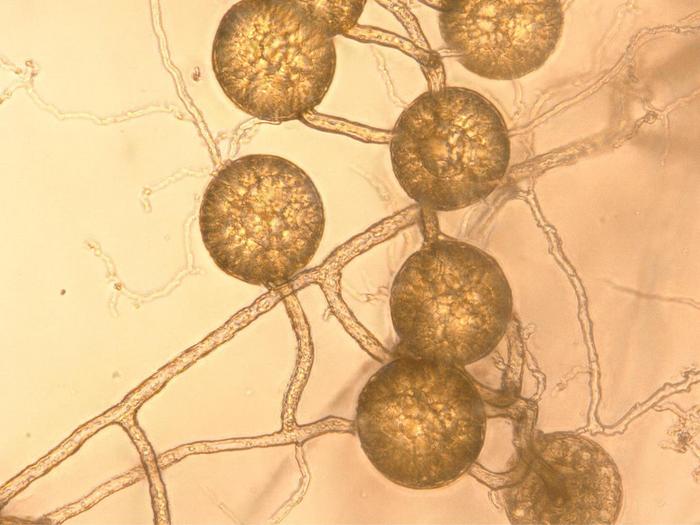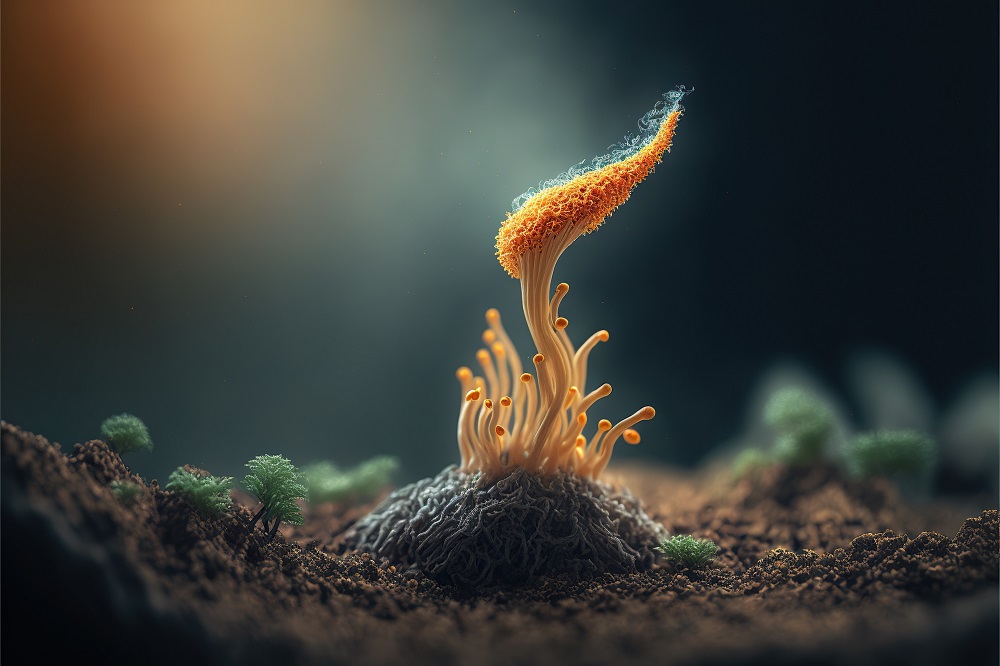In a groundbreaking study published in Current Biology, the profound impact of fungi on climate change mitigation has come to light. This research has shed new light on the crucial role played by fungi in consuming a significant portion of the world’s annual fossil fuel emissions. These findings emphasize the importance of recognizing fungi as an integral component of carbon modeling and conservation efforts. This article delves into the fascinating world of fungi and their underground networks, highlighting their essential role as a subterranean “carbon bank” and the potential risks posed by human activities.
The Hidden Heroes: Fungi and Carbon Emissions
Fungi, often associated with mushrooms sprouting above ground, have long been overlooked in climate change discussions. However, this recent study reveals that fungi possess remarkable abilities to mitigate carbon emissions. Specifically, they consume more than a third of the world’s annual fossil fuel emissions, making them significant players in the fight against climate change.

Mycorrhizal Fungi: The Underground Networks
Beneath the surface lies a vast network of mycorrhizal fungi, intricately intertwined with plant roots. These symbiotic relationships between fungi and plants create a mutually beneficial exchange. The fungi provide plants with essential nutrients, while the plants supply the fungi with carbon dioxide generated through photosynthesis.
This underground network acts as a critical carbon sink, storing vast amounts of carbon dioxide, thereby preventing it from entering the atmosphere. The intricate mycelial networks of fungi spread far and wide, connecting numerous plants in a complex web of carbon sequestration.
Fungi as a Subterranean “Carbon Bank”
The ability of fungi to absorb carbon dioxide and store it underground has earned them the nickname of a “carbon bank.” This underground carbon storage is crucial for maintaining a balance in the carbon cycle and mitigating climate change. By storing carbon dioxide, fungi help regulate atmospheric concentrations, reducing the impact of greenhouse gases.
Fungal Disruption and Carbon Storage Risks
Despite their pivotal role, human activities such as agriculture, mining, and industry can disrupt delicate fungal networks. These disruptions pose significant risks to the stability of carbon storage in underground fungal systems. As human interventions increase, the potential for disturbance grows, jeopardizing the vital role that fungi play in climate change mitigation.
The study estimates that globally, plants pump approximately 13 gigatons of carbon dioxide into underground fungi each year. However, the disruption caused by human activities threatens this natural carbon sink, potentially leading to increased atmospheric carbon dioxide levels and exacerbating the effects of climate change.
Conservation Efforts and the Future
Recognizing the importance of fungi in climate change mitigation is crucial for conservation efforts. By safeguarding and restoring fungal networks, we can maximize their carbon sequestration potential and promote the stability of carbon storage systems. Integrating fungi into carbon modeling frameworks and conservation strategies is essential to develop sustainable approaches to combat climate change effectively.
The recent study emphasizes the pivotal role played by fungi in mitigating climate change. These remarkable organisms consume a substantial portion of the world’s annual fossil fuel emissions, acting as a vital but often overlooked component of carbon modeling and conservation efforts. Through their underground networks, mycorrhizal fungi form a subterranean “carbon bank,” efficiently sequestering carbon dioxide and reducing its impact on the atmosphere.
However, the disruption caused by human activities poses significant risks to the stability of these fungal networks, jeopardizing their capacity for carbon storage. It is imperative to raise awareness about the importance of fungi in climate change mitigation and implement conservation strategies to protect and restore these essential underground networks. By recognizing and valuing the role of fungi, we can work towards a more sustainable future, combating climate change one carbon molecule at a time.
- What caused the Cordyceps virus in The Last of Us?
In the fictional world of The Last of Us, the Cordyceps virus is caused by a mutated strain of the Cordyceps fungus, which primarily infects insects in reality. In the game’s narrative, the Cordyceps fungus has undergone a catastrophic mutation, enabling it to infect and spread among humans, leading to a devastating global pandemic.
- Why can’t Cordyceps infect humans?
In reality, Cordyceps primarily affects insects and other arthropods, but it does not naturally infect humans. The biology and physiology of humans differ significantly from that of insects, making us immune to the Cordyceps fungus. While the game portrays a fictional scenario where the Cordyceps virus has mutated to infect humans, it is important to note that this is purely a work of fiction and does not reflect real-world scientific possibilities.
- Is The Last of Us based on a fungus?
Yes, The Last of Us draws inspiration from the Cordyceps fungus, a real fungus that primarily affects insects and other arthropods. The game’s fictional world imagines a mutated strain of the Cordyceps fungus that can infect and spread among humans, leading to a post-apocalyptic scenario. However, it is essential to remember that The Last of Us is a work of fiction and takes artistic liberties in its depiction of the Cordyceps virus and its effects on humans.
- Can humans be infected by Cordyceps?
In reality, humans cannot be infected by the Cordyceps fungus that primarily affects insects. The Cordyceps fungus has co-evolved with specific insect hosts and has developed a specialized relationship with them. While there are many different species of Cordyceps, none of them naturally infect or harm humans. Cordyceps supplements available in the market are cultivated and processed in controlled environments, ensuring they are safe for human consumption and do not pose any risk of infection.











